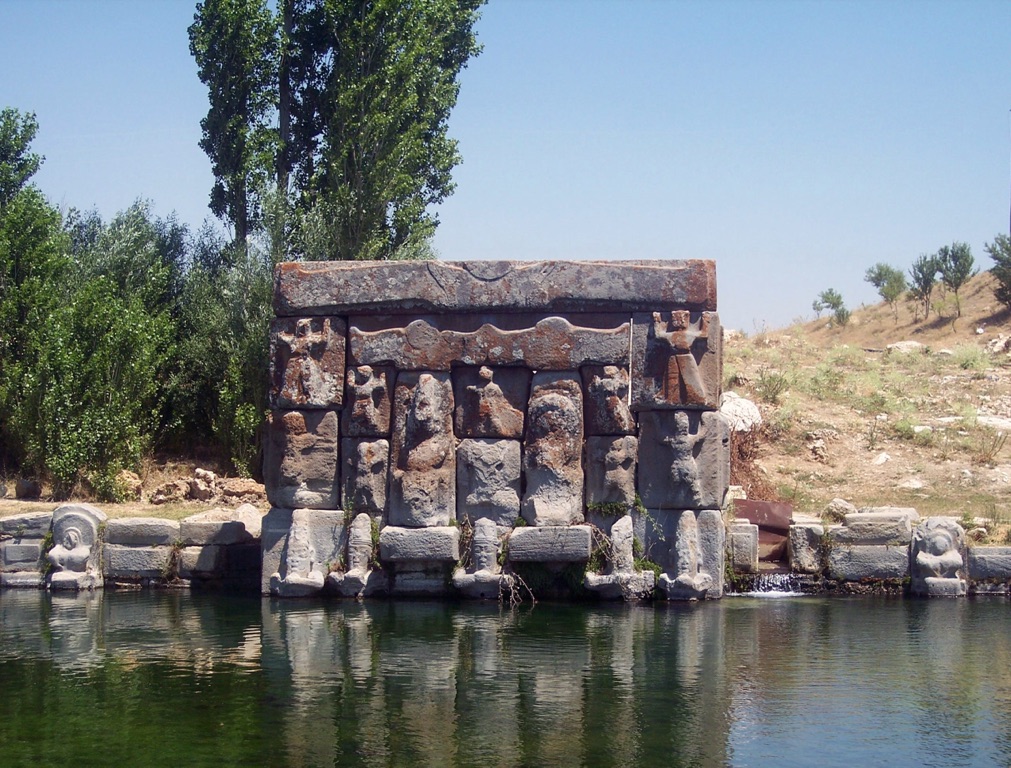Eflatun Pınar is a Hittite spring sanctuary situated near Konya, Turkey. It dates back to the late Bronze Age, around the 13th century BC. This site is renowned for its elaborate stone carvings and monumental architecture. It features a spring pond surrounded by stone reliefs depicting gods and goddesses from the Hittite pantheon. Eflatun Pınar stands as a testament to the religious practices and artistic achievements of the Hittites, offering valuable insights into their culture and beliefs.
Get your dose of History via Email
Historical Background of Eflatun Pınar
The discovery of Eflatun Pınar dates back to the early 20th century. Archaeologists stumbled upon this ancient marvel while exploring the region. The Hittites, a powerful Anatolian civilization, built this sanctuary. They thrived in the area during the second millennium BC. Eflatun Pınar’s intricate stonework reflects their advanced craftsmanship and religious fervor.
Over the centuries, the site has seen various inhabitants. After the fall of the Hittite Empire, other civilizations, including the Phrygians and later the Romans, left their mark on the region. However, Eflatun Pınar remains primarily a Hittite legacy. It has not been the scene of any major historical events but serves as a cultural and religious snapshot of its time.
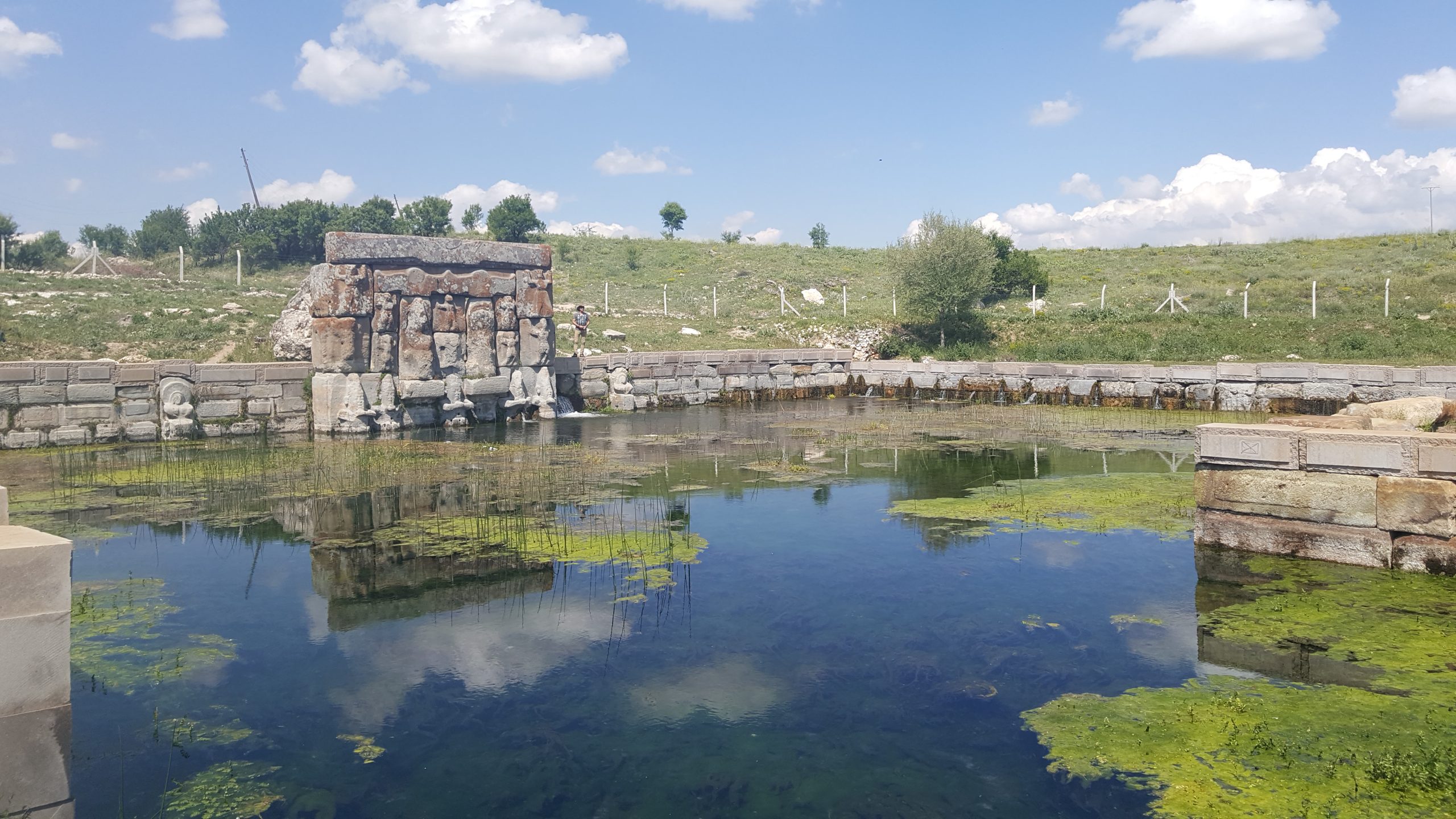
The Hittites constructed Eflatun Pınar as a sacred place of worship. The site’s location, near a natural spring, was likely chosen for its religious significance. Water played a crucial role in Hittite spirituality. The spring at Eflatun Pınar would have been a focal point for rituals and offerings to the gods.
Despite its age, Eflatun Pınar has preserved its grandeur. The site’s remote location may have shielded it from extensive damage. However, natural erosion and the passage of time have taken their toll. Conservation efforts are ongoing to protect and study this ancient sanctuary.
Archaeological excavations and research continue to shed light on Eflatun Pınar. These efforts aim to unravel the mysteries of its construction and use. The site remains an active area of study for historians and archaeologists alike. They are piecing together the story of this enigmatic Hittite monument.
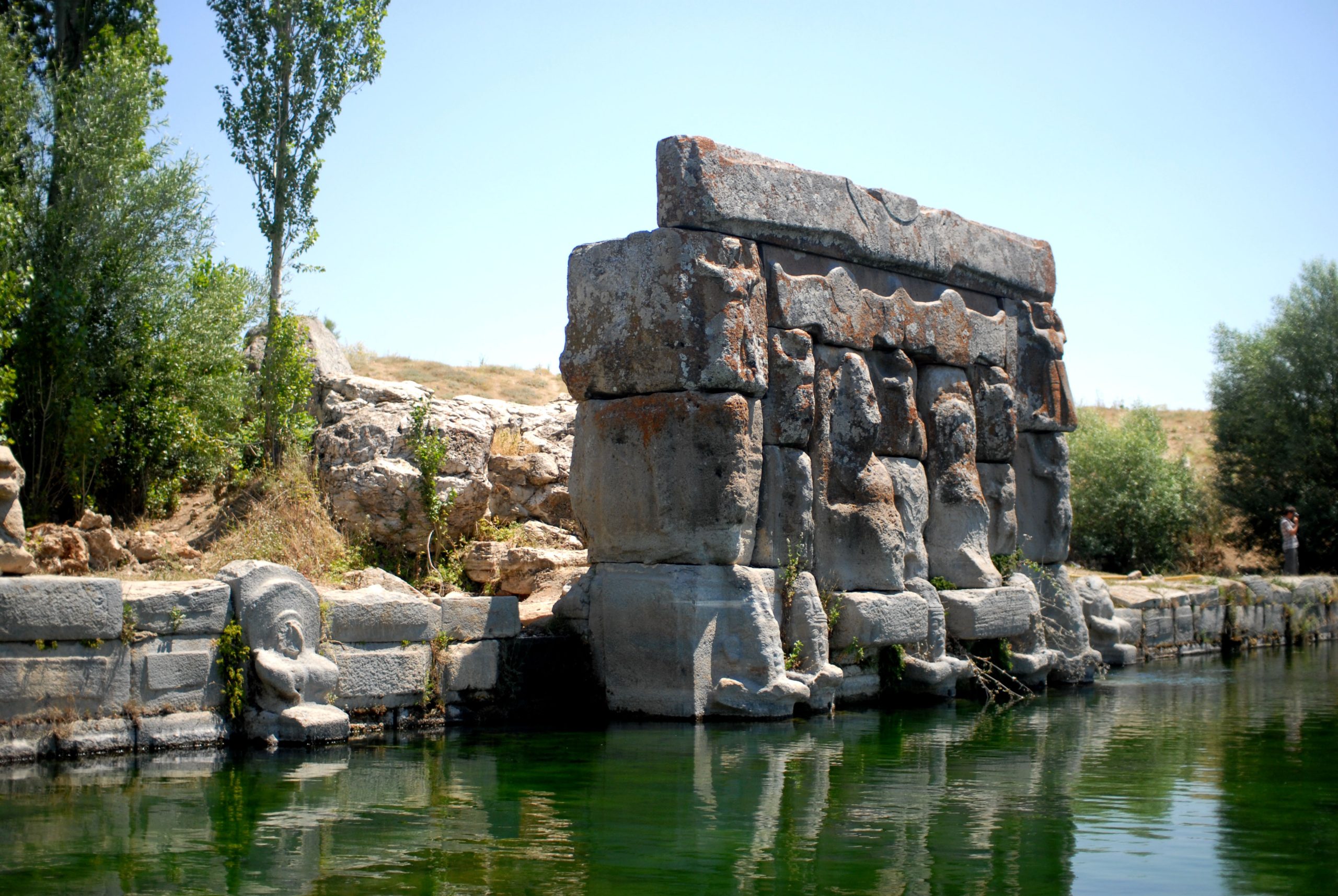
About Eflatun Pınar
Eflatun Pınar is a marvel of Hittite architecture and artistry. The site consists of a large, rectangular pond fed by a natural spring. The pond’s walls are adorned with stone reliefs. These depict deities and mythological creatures from the Hittite pantheon.
The construction of Eflatun Pınar involved massive limestone blocks. The Hittites carved these blocks with great precision. They assembled them without the use of mortar. This technique showcases their skill in stonemasonry and engineering.
The most striking feature of Eflatun Pınar is the monumental façade on the pond’s western side. It displays a complex arrangement of bas-relief carvings. These include figures of gods standing on the backs of animals and mythical beasts. The central figure is thought to represent a Hittite deity, possibly the storm god Tarhunza.
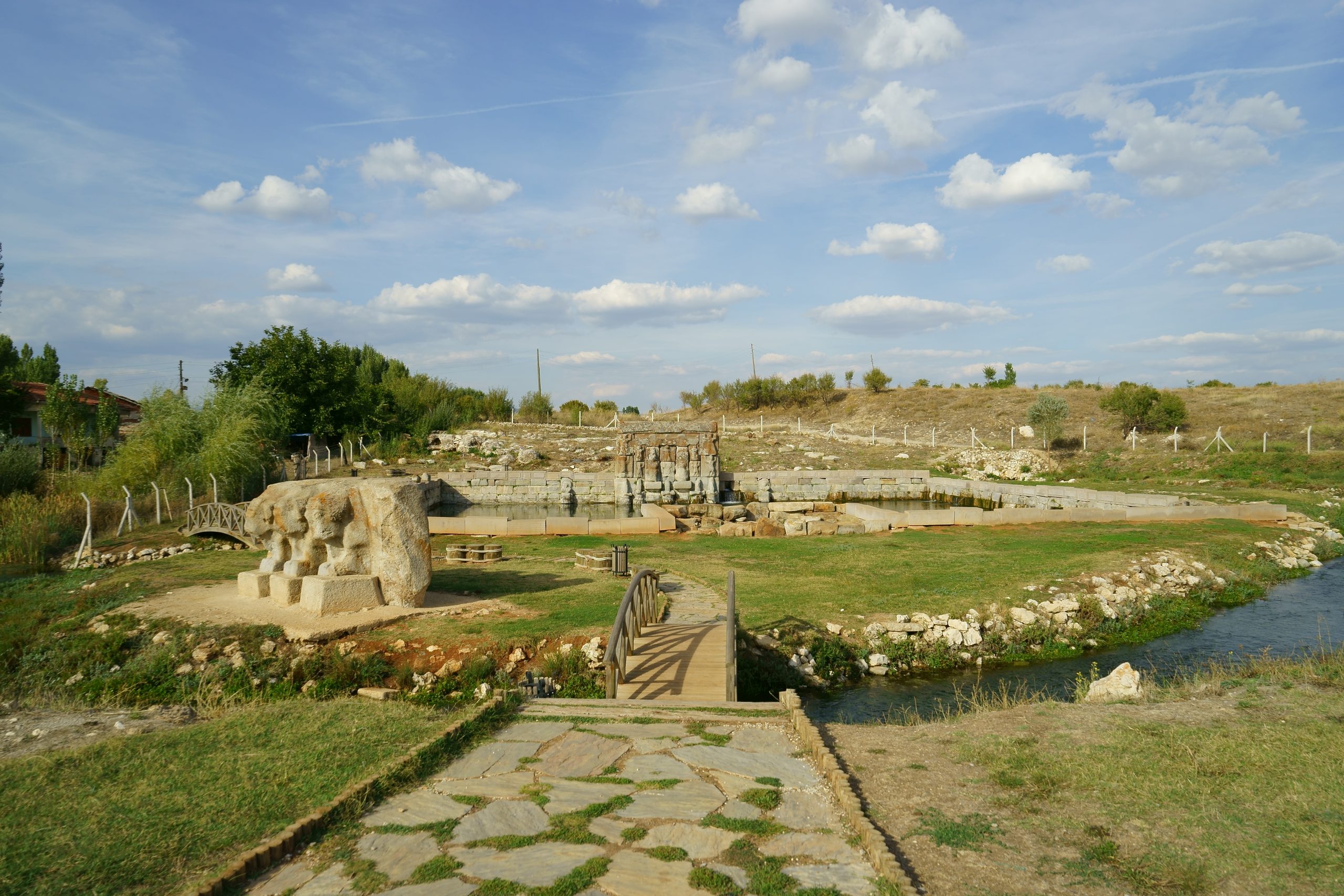
The architectural highlights of Eflatun Pınar are not just aesthetic. They also serve a religious purpose. The reliefs and the pond’s alignment with the spring suggest a ceremonial function. The site was likely a place for offerings and communion with the divine.
Despite the ravages of time, Eflatun Pınar’s carvings remain relatively well-preserved. They provide a glimpse into the religious iconography and artistic conventions of the Hittite civilization. The site’s preservation allows for a better understanding of their cultural and religious practices.
Theories and Interpretations
Several theories surround the purpose and symbolism of Eflatun Pınar. Most scholars agree that it served as a religious sanctuary. The presence of water, a sacred element in Hittite culture, supports this interpretation.
Some mysteries linger about the site’s specific functions. Was it a place for public worship or reserved for the elite? Did it serve as a pilgrimage site? These questions fuel ongoing research and debate among historians.
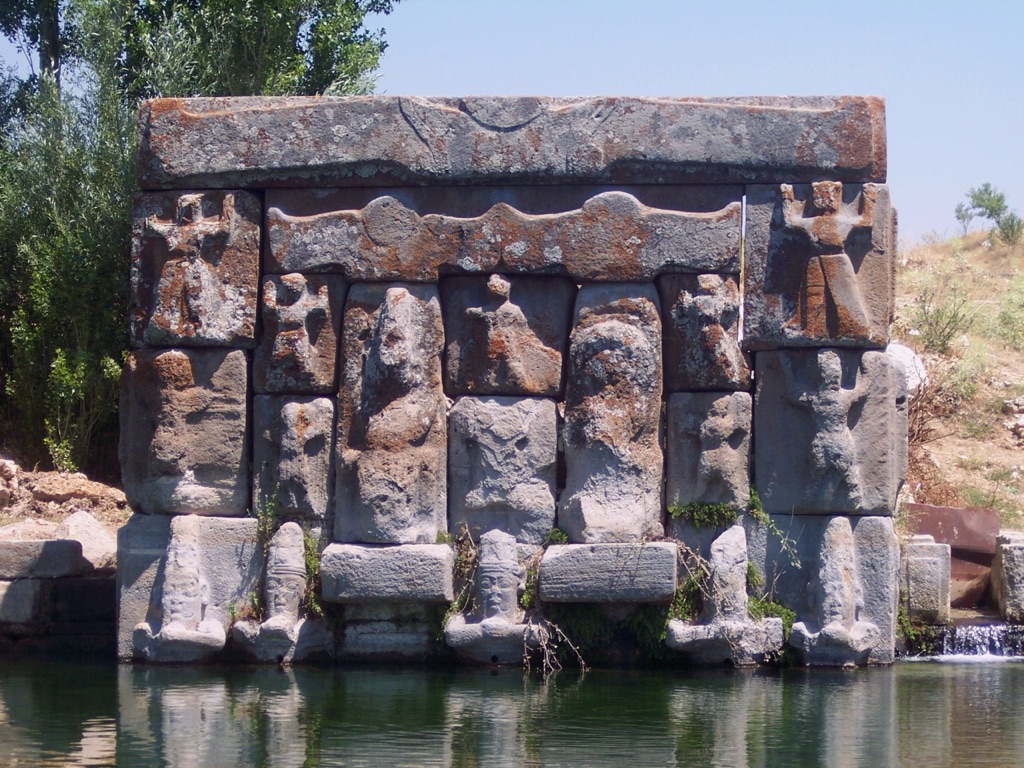
The carvings at Eflatun Pınar have led to various interpretations. They match some historical records of Hittite mythology. Yet, the exact identities of the depicted deities remain a topic of discussion. The central figure’s prominence suggests a significant god, but its precise role is still under scrutiny.
Dating Eflatun Pınar has involved several methods. These include stylistic analysis of the carvings and radiocarbon dating of organic materials. The consensus places the construction in the late Bronze Age, around the 13th century BC.
The site continues to be a subject of fascination for both experts and laypeople. Its blend of art, architecture, and mystery captivates all who study it. Eflatun Pınar remains an enigmatic piece of the Hittite puzzle, waiting for further pieces to fall into place.
At a glance
- Country: Turkey
- Civilization: Hittite
- Age: Late Bronze Age, approximately 13th century BC

